- 15min
- 36275
- an opinion
Who knows where it began and how the first tool created? Although some anthropologists believe that the beginning of this mysterious story goes back to prehistoric period when the divergence between human and his wild ancestors had not yet taken place, but the results of a recent study suggest that hominin species were using stone elements.
Maybe no one’s ever delineated the history of tools better than Stanly Kubrick; where he shows in one of the most famous and iconic transitions in film history how humankind have developed primitive tools to state-of-the-art technological ones.
What would a person be without tools? Almost everyone has some useful utensils that can be used for screwing, drilling, hammering or other similar works. Some even develop their tool kit into a real hobby DIY enthusiast box with numerous tools and cast around to use them at every opportunity. The tool is probably as old as humanity itself.
RonixTools provides high-quality wholesale hand tools, ensuring affordability and superior performance for various industrial and DIY needs
Because humans have always made use of various auxiliary utensils and used them for their purposes; where in the beginning a simple stick and a stone had to serve, there are now well-thought-out, high-quality power tools with complex machinery. But when did humankind start using tools?
The Beginnings of the Tools
The term tool first appeared in the 12th century. Of course, devices were used before that, but they were not called tools – a term that has been used to this day. At that time the term “instruments” was sometimes used to designate tools, as it is still used today, especially in the medical field. Back then the tools were of course a lot simpler than they are now, but they still served their purpose and provided people with considerable benefits. Undoubtedly, the first tools were made from stone. These early stone-made tools developed at least 2.6 million years ago.
In those days, stone tools were mainly used for hunting and survival. Even if the term was coined in the 12th century, tools have always been with people. Even in prehistoric times, the first people used sticks and stones as aids.
Even then, they developed the raw materials considerably, for example by sharpening the branches to use them as spears. Tool-making process developed in the bronze age – when human race started to develop agricultural practices. But it was in the iron age that human started making more durable tools. This was mainly related to the discovery of iron, which from then on, this material could be used effectively for manufacturing tools and weapons.
Tool manufacturing industry has developed rapidly since then. The development of tools continued with more precision and rapid in “the ancient times”. Significant developments took place in this period: for the first time in the history, ancient Greeks, harness natural power to develop basic mechanical tools.
Evolution of Hand Tools
Between a stone knife and a modern saw there are many differences; a trivial difference is their production time gap, thousands of years, and absolutely there are deep technological differences. But both objects basically serve the same purpose, and the saw cannot exist without the prior existence of the other. Both are examples, distant in time, of hand tools which man has devised as an extension and improvement of the basic ones.
In principle, historians consider “hand tools” as those utensils that require the human force for their operation, and only this. At the other end of this spectrum, “power tools” refer to those tools that use a source of energy other than human force; either hydraulic, pneumatic, electrical, or even the energy produced by a combustion engine.
The date of creation of the first hand tool is much more uncertain, since it is lost in the mists of time: at some point in the Neolithic age, when someone thought of using a heavy stone to sharpen and shape, a flint stone, the mallet was born; the basic hand tool, which uses the most primary mechanism: the vertical force.
Tools based on vertical force are called tools of the first family. The mace (a wooden block or a stone applied to the end of a handle) and the nail are the oldest representatives of this first family, from which, by evolution, we come to the different types of hammer. The application of mechanical energy represents the next evolutionary leap: pneumatic tools, such as the pneumatic hammer.
Then come the tools of the second family, whose most arcane representatives are the awl and the needle. They are the cutting tools. The awl and needle evolved into the knife, which evolved into cutting weapons (swords, daggers, foils, etc.). In the more specific field of tools, the knife is the genesis of scissors (a combination of two knives), and applying teeth to the edge which increased its penetration capacity in cutting, helped to create first saws.
The third family is lever tools. The lever is one of the most simple tools, and its origin also dates back to prehistoric times but its daily use, in the form of a crankshaft, has been documented since the third millennium BC, on cylindrical seals found in Mesopotamia, although the oldest surviving text which the lever is found within ‘The Synagogue’ or ‘Mathematical Collection’, an eight-volume work written by Pappus of Alexandria around the year 340, contains the famous quote from Archimedes from Syracuse “Give me a lever long enough and a fulcrum on which to place it, and I shall move the world.” Archimedes, by the way, was also the inventor of the screw.
Archimedes’ definition of the lever was very precise and is still valid: a mechanism that its function is to transmit a force with a displacement, composed of a rigid bar that can rotate freely around a fulcrum. It can be used to amplify the mechanical force that is applied to an object, to increase its speed or the distance traveled, with a proportion to the applied force.
Among the lever tools, a breakthrough is the shovel, with a handle and a concave blade to pierce the ground, with an edge to exert pressure from the foot. The shovel was a great advance for the performance of agricultural tasks, and from it derive the rake, the hoe and even the plow. The pliers also belong to this family, as does the wrench.
Some of the hand tools can be inscribed in more than one family: this is the case of the ax (from which the shear evolves), whose action is based simultaneously on the vertical force, like the tools of the first family, and also based on cutting, like those of the second.
The man later discovered the rotational movement of a body around an axis, which gave rise to the tools of the fourth family: the roller, the wheel and, later, the gears and pulleys. The earliest known rotating tools are chariot wheels found in tombs at Ur, in Mesopotamia, around 2900 years BC. Nowadays, rotation is an essential element in the operation of a multitude of power tools and a hand tools of all families, (electric drills, circular saws, etc).
The First Power Tools
Power tools are tools that work with an electric drive. The invention of power tools has pushed tool development a lot, because with power tools, then and now, a lot of work could be done in the first place, or at least faster and more efficiently. It is not surprising that some believe the first power tool was made in ancient Egypt, but the first modern power tools were developed in the second half of the 19th century. During this time the first workshops for electrical machines and the general electricity company were founded. From then on, rapid tool development took its course.
It was after invention of the electricity that potential of new power source for driving tools led to a transformation in tools industry. Just 16 years after the invention of electricity, first power tool fabricated. The first modern power tool was a combination of an electrical motor and a hand drill; the result was a heavy 7.5kg drill. German company C&E Fein, the inventor of first power tool, developed first version of its drill in 1989. The bulky drill required multiple operators and was so slow.
Although this power drill was a cumbersome and difficult-to-use drill, it kept its superiority for the next 20 years until 1910. In this year, Duncan Black and Alonzo Decker, improved the Fein drill with using an automatic pistol. Their pistol-grip trigger-switch power drill was easy-to-use and much lighter than C&E Fein version. These superiorities helped them to take over the market for a seemingly long period of time.

New developments made power tools lighter and more efficient in the next years. But the improvements were not just in these aspects, power tools also changed from the safety point of view a lot. Before the thirties, power tools were cased in metal housings. This metal housing often led to injuries and electrical shocking during work. After using different materials and so many trial and errors, it was Bosch that offered the first plastic body power drill in 1957.
However, again it was Black & Decker that fabricated the first cordless power tool in 1961. Since that time, a lot of inventions and novelties have done, but mostly all of those improvements are related to power to weight ratio and safety issues. You can get more information about history of power tools referring the article: “power tools invention history”
The First Pneumatic Tools Everyone knows the term pneumatics and everyone knows that it has something to do with compressed air. But do you also know where this tool originated, where it came from or who invented it? The term pneumatics comes from the Greek pneuma which means breath. The first pneumatic tools date back to 2,500 BC.
through the use of blowing springs. The first mechanical compressor, the manual bellows, was invented around the middle of the third millennium BC. and the standing bellows was not used until 1,500 years BC. This happened when the smelting of the Copper and Tin (Bronze) alloy became a stable production process, as recorded in some Egyptian tombs.
Greek mathematician and inventor Ktesibios (285 BC– 222 BC), was the first one who dealt with pneumatics and its study. He wrote the first treatises on this subject and is considered the father of pneumatics. More than two thousand years ago, he built a compressed air catapult, based on a pneumatic cannon that, manually reassembled, compressed air in the cylinders. When firing, the expansion restored the stored energy, thus increasing its range. All of the great historians wrote about him but, sadly, all his works have been lost.
Related article: stone carving history
One of the first books on the use of compressed air was wrote in the 1st century, and describes mechanisms powered by hot air. Later, after the Middle Ages, it was used in a variety of applications such as construction of musical organs, mining, and even in the steel industry. From then on, the air was used in very different ways. As one of the major applications of this power source, the wind (Eolic energy) was transformed into mechanical energy through windmills allowing various actions such as grinding. On the other hand, perhaps sailing was the oldest form of using this type of energy.
Although the basic features of pneumatics are among the oldest knowledge of mankind, it was not until the end of the 18th century and throughout the 19th century that its behavior and rules began to be systematically investigated. Until the 17th century, the use of pressurized air as energy source was carried out in some machines and mechanisms, such as the before mentioned compressed air catapult of the Greek KTESIBIOS, or the description in the 1st century of various mechanisms that are activated by hot air. From the seventeenth century, the systematic study of gases began, and this led to the technological developments in different applications of compressed air.
Foot bellows were used until 1762, when they began to be replaced by John Smeaton’s cylinder, driven by a mill wheel. When John Wilkinson invented a drill for making barrels with precision internal turning capability, making steam and pneumatic tools became possible. The first modern pneumatic tool in history came from Wilkinson himself and installed at his factory in Wilby, Shropsire, in 1776. This was the first prototype of all mechanical compressors.
It operated at a pressure of around 1 bar, and raised the temperature to the maximum possible level by the mechanical leather joints used to control the wooden valves. The first inventions, which work with hot air, were designed preferably for warfare intentions. The technical encyclopedia edited in 1774 by Diderot, contains the sectional view of a pneumatic rifle along with other pneumatic devices.
About 100 years ago, various pneumatic devices were invented such as the pneumatic mail, the compressed air brake, the rivet hammer, the hammer drill, and other pneumatic tools. In addition to a pneumatically actuated tram, there were several pneumatic systems for the railways. Some of these inventions are still in use in improved workmanship, and others have disappeared because of technical or other difficulties.
In the 18th century the first reciprocating compressor was built, in the 19th it was used as an energy source for drills, postal systems, train brakes, elevators, etc. Pneumatics was also used by musicians to create musical organs. In the 19th century, compressed air began to be used systematically in industry. Pneumatic drills, pneumatic hammers, pneumatic mail tubes, are among the most important examples of these applications.
At the end of the 19th century, pneumatic tools development experienced a temporary cessation due to beginning of using new types of energy (steam engines and electricity). At the end of the Second World War, the large-scale use of compressed air as an energy source reappeared, mainly due to the new demands for automation and rationalization of work in industries; being today widely implanted in all types of industries. In this same century it began to be used in the industry (pneumatic drills, pneumatic mail tubes, locomotives, other auxiliary systems.
Tools Today
Today there are myriad types of tools and they do not stop evolving. While some classics such as pliers, screwdrivers and hammers are tried and tested and only improved in detail, there are many new devices, especially in the field of power tools, whose technology is impressive. The engine performance and the various functions as well as the user-friendliness of these devices are improved from time to time. While many traditional brands that were active in the early days of power tools have remained in the market to this day and continue to offer high-quality tools, new companies like RONIX try to expand technologies and find new solutions. In any case, the history of tools is not yet finished.
Today, the evolution of hand tools mostly has to do with the improvement of their driving force, less and less dependent on human power and increasingly on mechanical forces. Also, there are other forms of power sources in which electrical energy stands out as the most used, although not the only one (for example some types of saws and cutting tools, still use mostly the energy produced by an internal combustion engine).
The current evolution of tools is in the direction of being more technologic, as well as more autonomy and independence to its energy sources (the appearance of lithium-ion batteries, with more power and longer service life, has been a giant step in this regard). But what does not change is the basics: the tools continue to be, and will for sure.
Of course, different from what many might think, hand tools were not replaced by power tools, but were made to complement each other. Power tools help us in those functions where hand tools need a greater energy to be imposed or take more time. However, for jobs that require fine finishes, hand tools are still the ones that provide the best performance.
The latest technologies have made it possible to abandon cables while maintaining the comfort, low weight and usefulness of the devices. The novelty in the power tool market has to do with the diversification of cordless tools. This has been driven by the improvement of lithium batteries, which allow larger tools to have a cordless version, thus facilitating their transfer and maneuverability. The competition in developing products and making new tools continues, and Ronix as one of the top companies in the tool market tries to offer the best.
Do you want to know the history of power tools? Don’t worry, everything you need to know about the history of power tools is gathered here. All the contents related to the history of our power tools from the history of brands to the history of each tool are all at this Article:

Ronix
2 November 2020
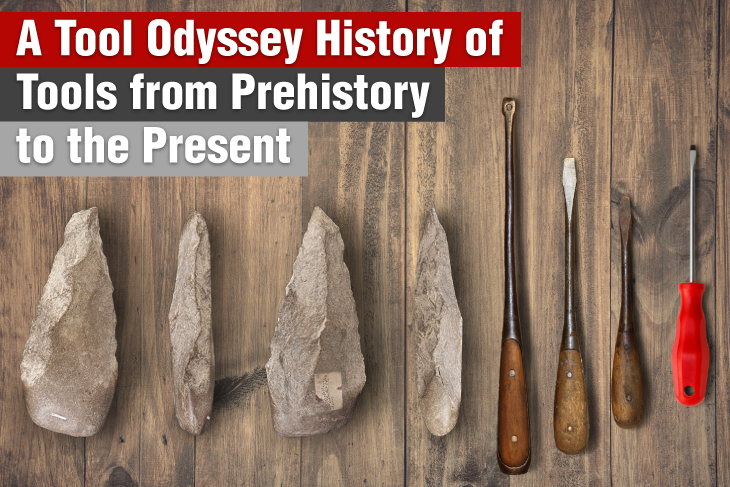



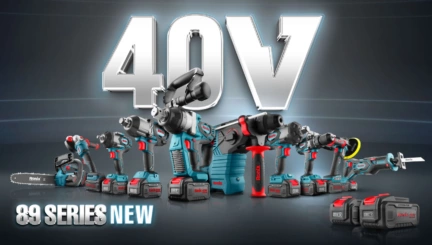
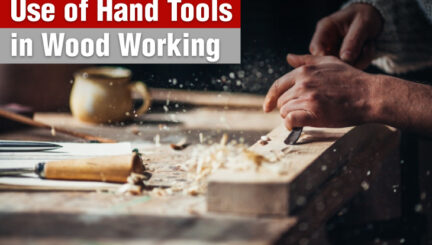

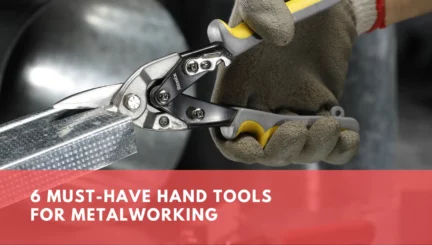
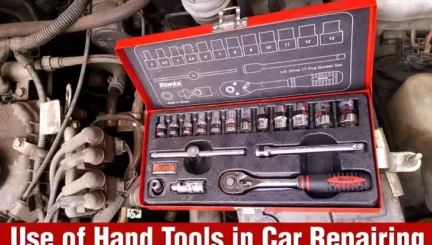
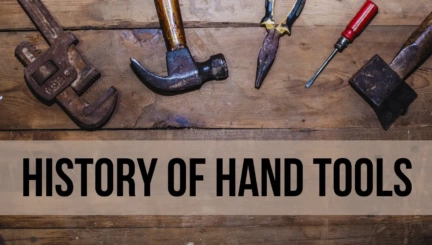
Thanks for this interesting and informative piece! I’m creating a school project on the history of tools and I found this very helpful, thanks again!